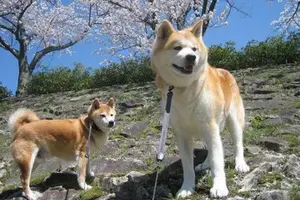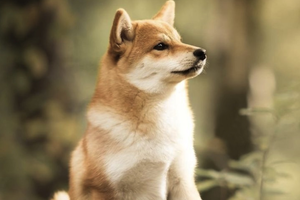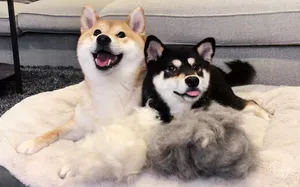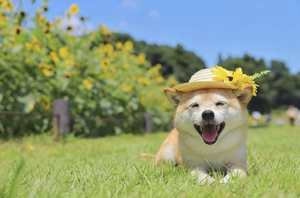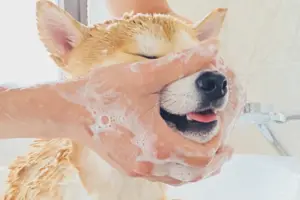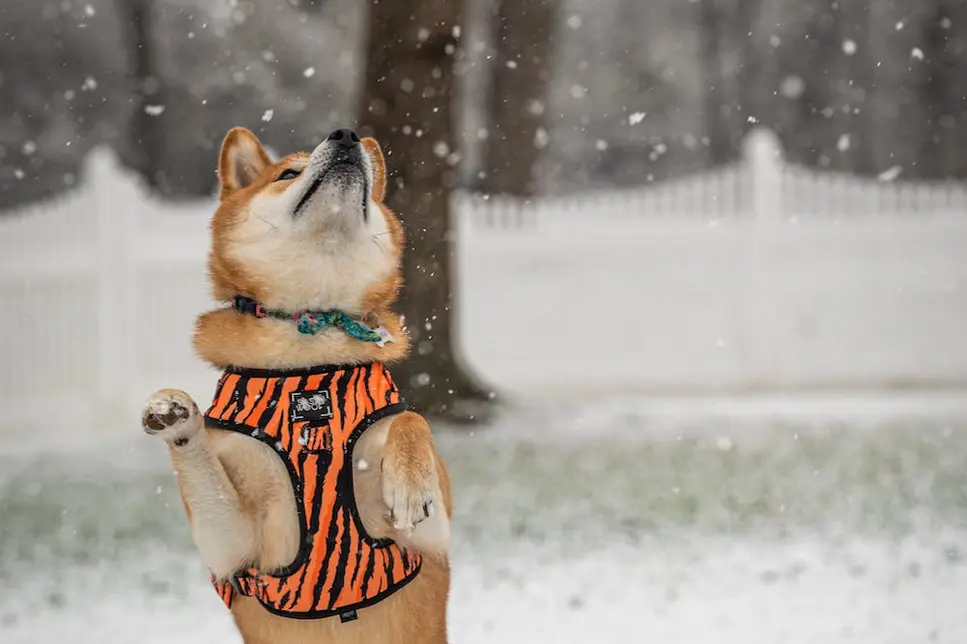
Shiba Inus are a popular breed of dog known for their spunky personalities and unique appearance. However, like any breed, Shiba Inus can present with behavior issues that can be challenging for their owners to manage. In this article, we will explore some of the most common behavior problems seen in Shiba Inus, including aggression, separation anxiety, barking, destructive chewing, house training, and leash pulling. We will also provide solutions and tips to help you manage and correct these issues, so that you can enjoy a happy and healthy relationship with your Shiba Inu.
Aggression
Aggression in Shiba Inus can be a serious issue that requires careful management and training. Some of the common causes of aggression in Shiba Inus include fear, territorial behavior, and lack of socialization. If your Shiba Inu is displaying aggressive behavior, it’s important to seek the help of a professional dog trainer or behaviorist.
To manage and prevent aggression in your Shiba Inu, there are a few things you can do. First, make sure your dog is properly socialized from a young age. This means exposing them to a variety of people, dogs, and situations so that they feel comfortable and confident in different environments.
Additionally, it’s important to establish clear boundaries and rules with your Shiba Inu. This means teaching them basic obedience commands and enforcing them consistently. Positive reinforcement training techniques can be particularly effective in managing aggressive behavior.
Finally, if your Shiba Inu is displaying aggressive behavior, it’s important to avoid situations that may trigger their aggression. For example, if your dog becomes aggressive around other dogs, it may be best to avoid off-leash areas or crowded dog parks. With patience and consistency, you can help your Shiba Inu manage their aggression and become a well-behaved and happy member of your family.
Separation Anxiety
Separation anxiety is a common behavior issue seen in many dogs, including Shiba Inus. This occurs when your dog becomes anxious or distressed when left alone or separated from their owner. Symptoms of separation anxiety can include excessive barking, destructive behavior, and inappropriate elimination.
To manage separation anxiety in your Shiba Inu, there are a few things you can do. First, make sure your dog gets plenty of exercise and stimulation throughout the day. This can help reduce anxiety and restlessness.
Additionally, you can try desensitization training to help your Shiba Inu become more comfortable with being alone. This involves gradually increasing the amount of time your dog spends alone, starting with just a few minutes and gradually working up to longer periods. You can also try leaving your dog with a special toy or treat that they only get when you’re away.
If your Shiba Inu continues to struggle with separation anxiety despite your best efforts, it may be helpful to seek the help of a professional dog trainer or behaviorist. They can help you develop a customized training plan to address your dog’s specific needs and help them feel more comfortable when left alone.
Barking
Shiba Inus are known for being vocal dogs, and barking is a natural behavior for them. However, excessive barking can be a problem, particularly if your Shiba Inu is disturbing your neighbors or causing you stress.
To manage barking in your Shiba Inu, it’s important to understand why they are barking in the first place. Some common reasons for barking include boredom, anxiety, or a desire for attention. Once you understand why your dog is barking, you can take steps to address the underlying issue.
For example, if your Shiba Inu is barking out of boredom, make sure they are getting enough exercise and mental stimulation throughout the day. Puzzle toys, interactive games, and regular walks can all help keep your dog entertained and engaged.
If your Shiba Inu is barking out of anxiety, it may be helpful to work on desensitization training to help them feel more comfortable in different situations. Positive reinforcement training techniques can also be effective in reducing barking and promoting good behavior.
Finally, if your Shiba Inu continues to bark excessively despite your best efforts, it may be helpful to consult with a professional dog trainer or behaviorist. They can help you develop a customized training plan to address your dog’s specific needs and help them become a well-behaved and happy member of your family.
Destructive Chewing
Destructive chewing is a common behavior issue seen in many dogs, including Shiba Inus. This occurs when your dog chews on furniture, shoes, and other household items, causing damage and frustration.
To manage destructive chewing in your Shiba Inu, it’s important to understand why they are engaging in this behavior. Some common reasons for destructive chewing include boredom, anxiety, and teething.
To address destructive chewing, make sure your Shiba Inu is getting enough exercise and mental stimulation throughout the day. Puzzle toys, interactive games, and regular walks can all help keep your dog entertained and engaged.
You can also try redirecting your dog’s chewing behavior to appropriate chew toys. Make sure your Shiba Inu has access to a variety of chew toys, and praise them when they chew on these items instead of household items.
If your Shiba Inu continues to engage in destructive chewing despite your best efforts, it may be helpful to consult with a professional dog trainer or behaviorist. They can help you develop a customized training plan to address your dog’s specific needs and promote good behavior.
House Training
House training is an important part of raising a happy and healthy Shiba Inu. This involves teaching your dog where and when it’s appropriate to eliminate, and establishing consistent routines to promote good behavior.
To house train your Shiba Inu, it’s important to establish a routine and stick to it. This means taking your dog outside at regular intervals, such as after meals and naps, and praising them when they eliminate outside.
Positive reinforcement training techniques can be particularly effective in house training your Shiba Inu. This involves rewarding good behavior, such as eliminating outside, with treats and praise. It’s important to avoid punishing your dog for accidents, as this can be confusing and counterproductive.
Crate training can also be helpful in house training your Shiba Inu. This involves keeping your dog in a crate when you’re not home, and gradually increasing the amount of time they spend in the crate. Make sure your dog has plenty of comfortable bedding and toys in the crate, and never use the crate as a form of punishment.
With patience and consistency, you can successfully house train your Shiba Inu and promote good behavior in all aspects of their life.
Leash Pulling
Leash pulling is a common behavior issue seen in many dogs, including Shiba Inus. This occurs when your dog pulls on the leash during walks, making it difficult to control them and potentially causing harm to both you and your dog.
To manage leash pulling in your Shiba Inu, there are a few things you can do. First, make sure your dog is getting enough exercise and mental stimulation throughout the day. A tired dog is less likely to pull on the leash during walks.
You can also try using positive reinforcement training techniques to teach your Shiba Inu to walk politely on the leash. This involves rewarding good behavior, such as walking calmly at your side, with treats and praise. You can also try using training aids, such as a front-clip harness, to help redirect your dog’s attention and discourage pulling.
Consistency is key when it comes to managing leash pulling in your Shiba Inu. Make sure you are using the same training techniques and commands every time you walk your dog, and be patient as your dog learns to walk politely on the leash.
If your Shiba Inu continues to pull on the leash despite your best efforts, it may be helpful to consult with a professional dog trainer or behaviorist. They can help you develop a customized training plan to address your dog’s specific needs and promote good behavior during walks.
In conclusion, Shiba Inus are unique and lovable dogs, but like any breed, they can present with behavior issues that require careful management and training. By understanding the common problems and solutions discussed in this article, you can help your Shiba Inu become a well-behaved and happy member of your family.
Remember, consistency and patience are key when it comes to managing behavior issues in your Shiba Inu. Make sure you are using positive reinforcement training techniques and establishing clear boundaries and routines to promote good behavior.
If you continue to struggle with behavior issues despite your best efforts, don’t hesitate to seek the help of a professional dog trainer or behaviorist. They can provide personalized guidance and support to help you and your Shiba Inu overcome any challenges and enjoy a happy and healthy relationship.

